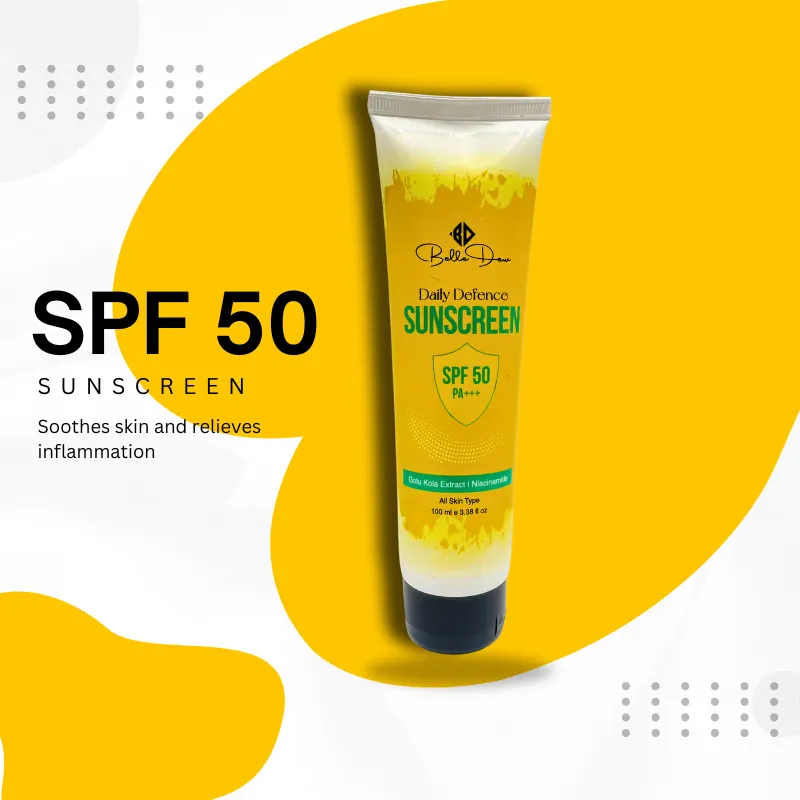
Blog
Unlocking the Benefits and Importance of SPF50 Sunscreen: Your Ultimate Guide to Sun Protection

Understanding SPF Sunscreen : Protection and Benefits
Sunscreen is a crucial component of any skincare routine, especially when it comes to safeguarding your skin against the harmful effects of UV radiation. Among the various options available, SPF50 sunscreen stands out for its high level of protection. In this article, we’ll delve into the nuances of SPF50 sunscreen, exploring its benefits, application techniques, and common misconceptions.
Understanding SPF (Sun Protection Factor)
Before delving into the specifics of SPF50, it’s essential to understand the concept of Sun Protection Factor. SPF indicates the level of protection a sunscreen offers against UVB rays, which are primarily responsible for causing sunburn and skin damage. Contrary to common belief, SPF primarily measures the effectiveness of blocking UVB rays, not UVA rays, which can also contribute to skin aging and cancer.
Benefits of SPF50
SPF50 sunscreen offers several advantages over lower SPF options. Firstly, it provides enhanced protection against UVB rays, effectively reducing the risk of sunburn and skin damage. Additionally, SPF50 sunscreen offers longer-lasting protection, reducing the frequency of reapplication. This makes it particularly suitable for outdoor activities and extended sun exposure. Moreover, SPF50 sunscreen is often formulated to be gentle on sensitive skin, minimizing the risk of irritation and allergic reactions.
How to Choose the Right SPF50 Sunscreen
When selecting SPF50 sunscreen, it’s crucial to consider factors such as your skin type, water resistance, and additional features. Individuals with oily or acne-prone skin may prefer oil-free or non-comedogenic formulas to prevent breakouts. Water-resistant sunscreen is essential for activities such as swimming or exercising outdoors. Additionally, fragrance-free and hypoallergenic options are available for those with sensitive skin or fragrance allergies.
Application Tips for SPF50 Sunscreen
Proper application of SPF50 sunscreen is key to maximizing its effectiveness. Experts recommend applying a generous amount of sunscreen to cover all exposed areas of the skin, including the face, neck, and ears. It’s essential to apply sunscreen at least 15 minutes before sun exposure to allow it to absorb into the skin fully. Reapplication is crucial, especially after swimming or sweating, to maintain adequate protection throughout the day.
Myths and Facts About SPF50
There are several misconceptions surrounding SPF50 sunscreen that warrant clarification. While higher SPF values offer increased protection, they do not provide complete immunity from sun damage. Reapplication is essential every two hours, regardless of the sunscreen’s SPF level, to ensure continuous protection. Additionally, seeking shade and wearing protective clothing are essential supplementary measures, as sunscreen alone cannot provide comprehensive protection against UV radiation.
Potential Risks and Precautions
While SPF50 sunscreen is generally safe for most individuals, there are potential risks to be aware of. Allergic reactions to sunscreen ingredients can occur, especially in individuals with sensitive skin or allergies. It’s essential to perform a patch test before applying sunscreen to the entire body, particularly if you have a history of skin reactions. Sunscreen also has an expiration date, and using expired products can compromise their effectiveness. Proper storage, away from direct sunlight and high temperatures, is essential to maintain sunscreen efficacy.
Importance of SPF50 for Different Activities
SPF50 sunscreen is indispensable for various outdoor activities, including sports, beach outings, and everyday sun exposure. Athletes and outdoor enthusiasts benefit from the long-lasting protection and water resistance of SPF50 sunscreen, allowing them to focus on their performance without worrying about sun damage. Similarly, beachgoers and pool enthusiasts rely on SPF50 sunscreen to safeguard their skin during extended periods of sun exposure.
SPF50 for Children and Babies
Children’s delicate skin requires special attention when it comes to sun protection. SPF50 sunscreen formulated specifically for children is gentle yet effective, providing reliable protection against sunburn and UV damage. It’s essential to choose sunscreen products specifically designed for infants and toddlers, as their skin is more sensitive and prone to irritation. Additionally, sun-protective clothing and shade should complement sunscreen use to ensure comprehensive sun protection for young children.
Environmental Impact of Sunscreen
The environmental impact of sunscreen has gained attention in recent years, particularly regarding its effects on coral reefs and marine ecosystems. Chemical sunscreen ingredients such as oxybenzone and octinoxate have been linked to coral bleaching and coral reef decline. As a result, there has been a growing demand for reef-safe sunscreen options, which use mineral-based ingredients such as zinc oxide and titanium dioxide. Choosing reef-safe sunscreen helps minimize the environmental footprint of sun protection practices.
Common Mistakes to Avoid
When using SPF50 sunscreen, it’s essential to avoid common pitfalls that can compromise its effectiveness. One common mistake is skipping sunscreen on cloudy days, as UV radiation can still penetrate cloud cover and cause skin damage. Additionally, neglecting certain areas of the body, such as the ears and neck, can leave them vulnerable to sunburn. Using expired sunscreen is another common error that can reduce its efficacy, highlighting the importance of checking expiration dates and replacing old products promptly.
Conclusion
SPF50 sunscreen offers superior protection against UVB rays, making it an essential component of any sun protection regimen. By understanding how SPF works, choosing the right sunscreen for your needs, and following proper application techniques, you can enjoy the sun safely while minimizing the risk of sunburn and skin damage. Remember to reapply sunscreen regularly, seek shade when possible, and wear protective clothing to maximize sun protection.
FAQs
1. Is SPF50 sunscreen waterproof?
a. While some SPF50 sunscreens
2. What does the ’50’ in SPF50 signify?
b. In SPF50, the number 50 represents the level of sun protection factor (SPF) provided by the sunscreen. It indicates that the sunscreen can theoretically protect your skin from UVB rays 50 times longer than if you weren’t wearing any sunscreen at all. So, if you would typically burn after 10 minutes of sun exposure without sunscreen, SPF50 sunscreen would theoretically provide protection for approximately 500 minutes (10 minutes multiplied by SPF50). However, it’s important to note that this is a general guideline, and factors such as sweating, swimming, and proper application can affect the sunscreen’s effectiveness.
Follow us on Instagram @belledew_ and @quintkart.in ; Shop at Belledew and Quintkart



